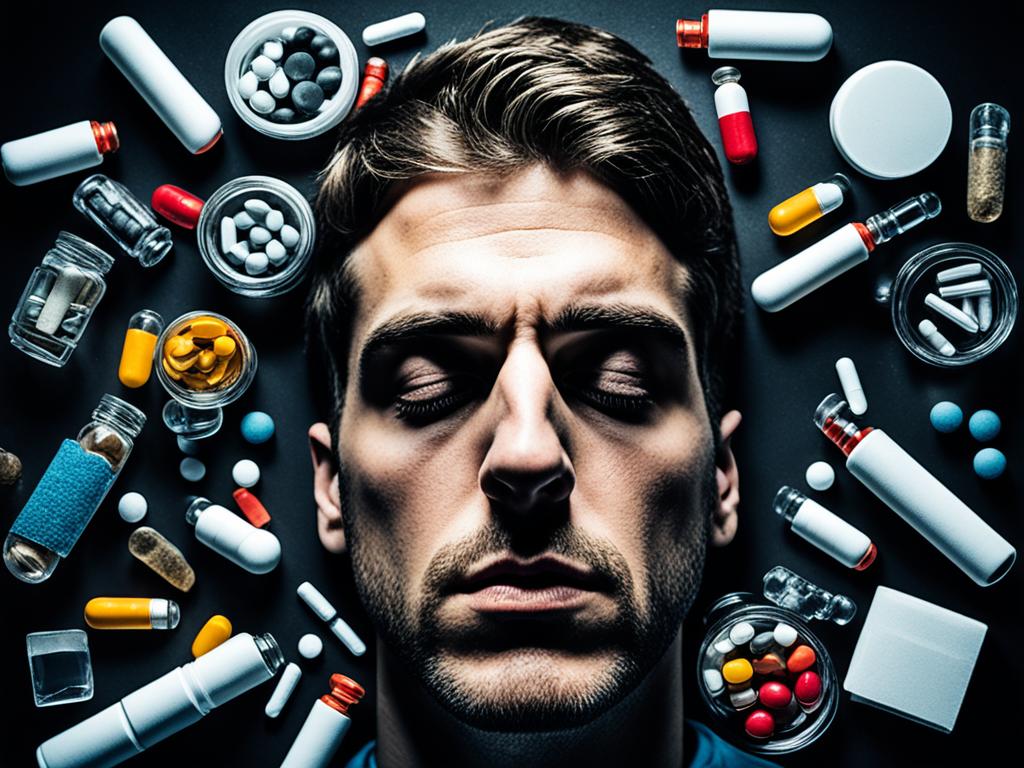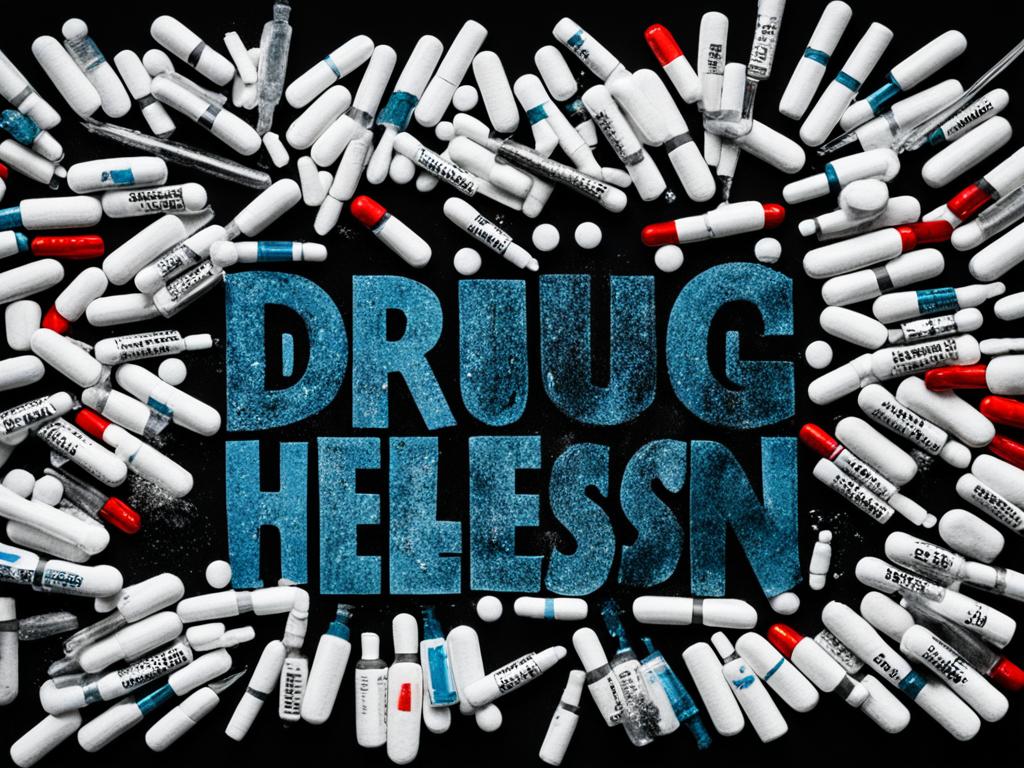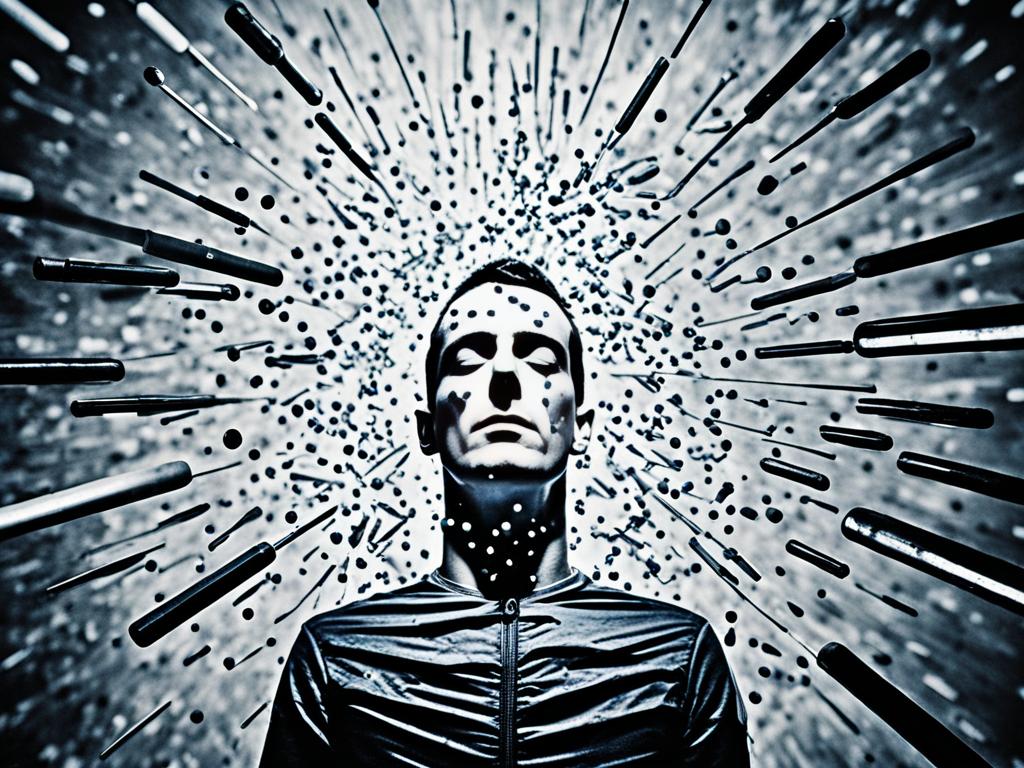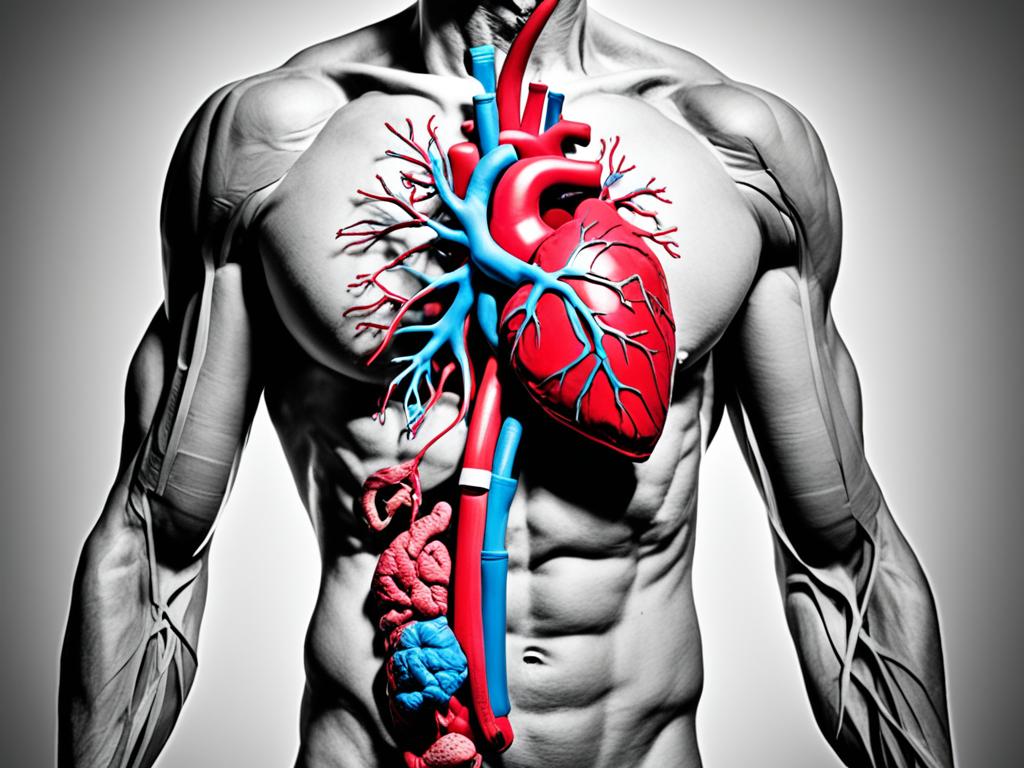
Drug Abuse: Symptoms, Addiction, Effect and Prevention
Drug abuse is a complex issue that impacts people, families, and communities around the world. This article looks closely at substance misuse. It covers symptoms, causes, effects, and ways to prevent it. We’ll see how drug abuse harms physical and mental health, and its social and economic effects.
To tackle drug abuse, we need a complete approach. This includes rehab programs, medication-assisted therapy, and spreading awareness. We’ll look at different treatment and recovery options. This helps people and communities fight addiction and improve their health. By focusing on the link between drug abuse and mental health, we aim to help those affected and show the need for care and support.

This article aims to be a key resource for readers. It gives them the knowledge and tools to spot drug abuse, find recovery paths, and help prevent it. Join us as we explore drug abuse deeply. We’ll highlight solutions and help people take steps towards a healthier future.
Understanding Drug Abuse
Drug abuse is a complex issue that impacts people, families, and communities. It’s important to understand what “substance misuse” means and the different types of drugs that can be misused.
Defining Substance Misuse
Substance misuse means using drugs in a way that’s not right or too much. This includes using drugs for fun, taking prescription drugs for non-medical reasons, and using illegal drugs. Misusing substances can cause many problems, like health issues, mental health problems, and legal troubles.
Types of Controlled Substances
Controlled substances are drugs that the government watches over because they can be abused or lead to addiction. They are put into different groups, including:
- Stimulants, like cocaine, amphetamines, and some prescription drugs
- Depressants, which include alcohol, benzodiazepines, and some sedatives
- Opioids, which are heroin, some painkillers, and synthetic opioids like fentanyl
- Hallucinogens, such as LSD, psilocybin, and MDMA
- Cannabis, which includes marijuana and hashish
Each type of controlled substance has its own effects, risks, and potential for abuse and addiction. Knowing about these categories helps us understand and tackle substance misuse.

Recognizing the Signs of Drug Abuse
It’s key to spot the signs of substance misuse to tackle drug abuse and addiction. Knowing the symptoms of drug abuse helps people get help early. Here are some main signs that someone might be dealing with drug abuse or addiction.
Physical Signs
- Changes in appearance, such as bloodshot eyes, dilated pupils, or sudden weight loss or gain
- Unexplained bruises, marks, or injuries
- Poor hygiene or neglected appearance
- Slurred speech or impaired coordination
Behavioral Changes
- Secretive or evasive behavior, such as hiding or lying about substance use
- Sudden changes in mood, including irritability, anxiety, or depression
- Neglecting responsibilities at work, school, or home
- Isolating themselves from friends and family
- Engaging in risky or reckless activities
Spotting these signs of substance misuse is the first step to getting help and tackling drug abuse.

Knowing the physical, behavioral, and mental signs of drug abuse helps people and their families act fast. Spotting drug abuse symptoms early can really help someone recover and stop the problem from getting worse.
The Path to Addiction
Understanding addiction is key to tackling substance abuse. It’s a complex process that affects both the mind and body. This journey can lead to severe consequences.
Psychological and Physical Dependence
Using drugs can activate the brain’s reward system, releasing dopamine. Over time, the brain gets psychologically dependent on these substances. This makes it hard to stop, even when it’s bad for you.
Long-term drug use also leads to physical dependence. The body gets used to the drug. When it’s taken away, people may feel bad and even face danger. This makes it hard to break the addiction cycle.
Risk Factors for Substance Abuse
Many things can lead to substance abuse and addiction. Key risk factors include:
- Genetics: Some people are more likely to become addicted because of their genes.
- Mental health conditions: People with mental health issues like depression or anxiety might turn to drugs to cope.
- Environmental influences: Being around drug use can make it seem normal and easier to get into.
- Trauma and stress: Traumatic events or ongoing stress can make people rely on drugs to feel better.
Knowing these risk factors helps us find ways to stop the drug abuse problem.

Devastating Effects of Drug Abuse
Drug abuse has severe health effects, leading to serious consequences. It can cause overdose, organ damage, and the spread of diseases. Substance misuse also affects society and the economy in big ways.
Health Consequences
One of the most dangerous effects is overdose, which can lead to death. Long-term drug use can harm organs like the liver and heart. Sharing needles increases the risk of getting diseases like HIV and hepatitis C.
Social and Economic Impact
- Strained relationships and family breakdowns
- Job loss and unemployment
- Increased healthcare and criminal justice costs
- Reduced productivity and economic output
Drug abuse also hurts social relationships, causing job loss and criminal activity. It leads to high healthcare and justice costs. In the end, drug abuse harms both individuals and society.

Drug Abuse and Mental Health
Drug abuse and mental health are closely linked, a big challenge for healthcare workers. Many people with drug problems also have mental health issues, known as dual diagnosis or co-occurring disorders. It’s key to understand how drug abuse and mental illness affect each other to help those in need.
Co-occurring Disorders
Studies show that having a mental health issue can make someone more likely to use drugs, and using drugs can also lead to mental health problems. People with mental illnesses might use drugs to feel better, and drugs can make mental health issues worse, like depression or anxiety.
Treating people with co-occurring disorders means looking at both the drug use and the mental health at the same time. Not treating both can make recovery harder and increase the chance of going back to using drugs.
- People with mental health issues are more likely to develop drug problems.
- Using drugs can make mental health problems worse or start new ones.
- Dealing with both drug use and mental health issues is key to getting better.
Healthcare workers can create better treatment plans by understanding the link between drug abuse and mental health. This way, people get the help they need for both problems at once. Helping with these issues is important for lasting recovery and better health.

Treatment and Recovery Options
Overcoming drug abuse and addiction is a complex journey. There are many treatment and recovery options available. These options include comprehensive rehabilitation programs and medication-assisted therapy. The path to recovery can be tailored to meet each person’s unique needs.
Rehabilitation Programs
Rehabilitation programs are key in treating addiction. They come in different forms like inpatient, outpatient, and community-based models. Inpatient programs offer a structured, 24-hour environment for focus on recovery. Outpatient programs are more flexible for those with work or family duties. Community-based programs provide support and resources locally.
Medication-Assisted Therapy
Medication-assisted therapy is a vital part of addiction treatment. It combines medications like buprenorphine, methadone, or naltrexone with behavioral therapies and counseling. These medications help reduce withdrawal symptoms, cravings, and support the brain’s healing. This increases the chances of long-term recovery.
Finding the right addiction treatment and recovery options can be tough. But, getting help from healthcare professionals and addiction specialists can guide you. With a thorough approach and a commitment to wellness, individuals can beat the challenges of drug abuse and take back their lives.
Remember, recovery is a journey. With the right support and resources, individuals can overcome drug addiction. They can start a fulfilling path to wellness.

Preventing Drug Abuse
Stopping drug abuse needs a mix of public health awareness, education, and community support. We must teach people about the dangers of drugs, encourage healthy living, and offer help to those who need it.
Public Health Awareness
Strong public health awareness campaigns teach the community about drug abuse risks. They use media, schools, and healthcare to spread the word. This helps people talk openly about drugs and their effects.
Support Groups and Resources
Support groups and resources are key in fighting drug abuse. They offer peer support, family counseling, and educational workshops. These help people find help, develop coping skills, and recover from addiction. A supportive community can greatly help those struggling with drugs.
FAQ
What is the definition of substance misuse?
Substance misuse means using drugs, including illegal ones, prescription drugs, and alcohol in harmful ways. It can lead to addiction and harm your health and social life.
What are the different types of controlled substances?
Controlled substances include stimulants like cocaine and amphetamines, depressants like opioids and benzodiazepines, hallucinogens like LSD, and cannabis. The government controls these because they can be abused and lead to addiction.
What are the common signs and symptoms of drug abuse?
Signs of drug abuse include physical changes, needle marks, and odd sleep patterns. You might also notice mood swings, isolation, and neglect of responsibilities. There can be changes in thinking, memory, and emotions too.
How does the addiction process work?
Addiction starts with psychological and physical dependence. Using drugs can make the brain’s reward system overactive, causing cravings and a strong need for the substance. Over time, the body gets used to the drug and can go through withdrawal without it.
What are the risk factors for substance abuse?
Risk factors include genetics, mental health issues, past traumas, peer pressure, and easy access to drugs. People with a family history of addiction or mental health problems may be more likely to use drugs.
What are the health consequences of drug abuse?
Drug abuse can cause serious health issues like overdose, organ damage, and infectious diseases. It can also lead to chronic conditions like heart disease and cancer. It can harm mental health, causing depression and anxiety.
How does drug abuse affect social and economic factors?
Drug abuse hurts social and economic life, causing problems with relationships, jobs, and money. It can lead to homelessness, family issues, and more poverty and inequality in communities.
What is the connection between drug abuse and mental health?
Drug abuse often goes hand in hand with mental health issues. Substance use can make mental health problems worse, and mental health issues can make drug use more likely. Treating both is key to recovery.
What are the different types of addiction treatment and rehabilitation programs?
Treatment options include inpatient, outpatient, and community-based programs. Medication-assisted therapy, which combines counseling with FDA-approved drugs, helps with withdrawal and recovery.
How can drug abuse be prevented?
Prevention involves awareness campaigns, education, and community support. It’s important to talk openly, offer resources, and address social and mental health factors that lead to misuse.



Nice article, one will know the causes and prevention of drug abuse.
Nice one